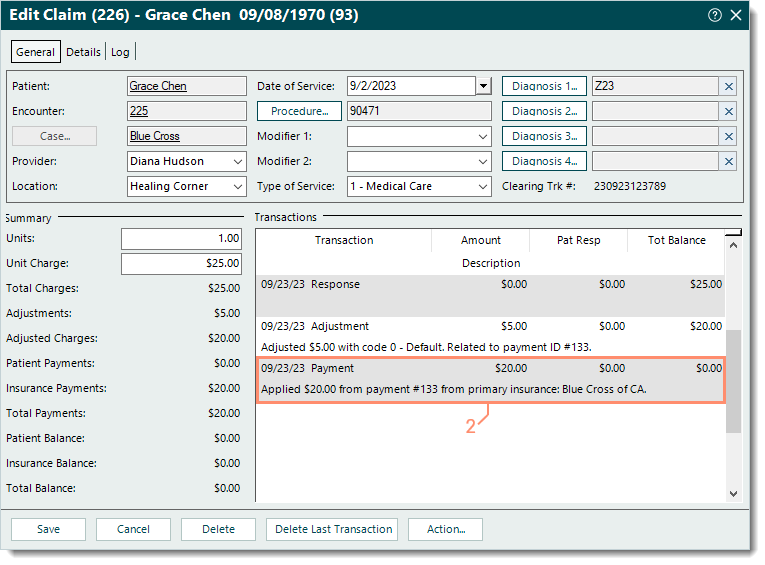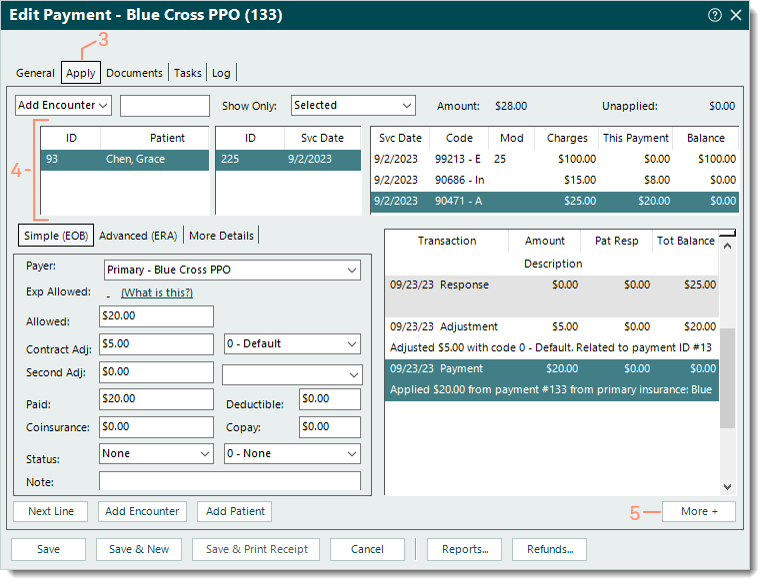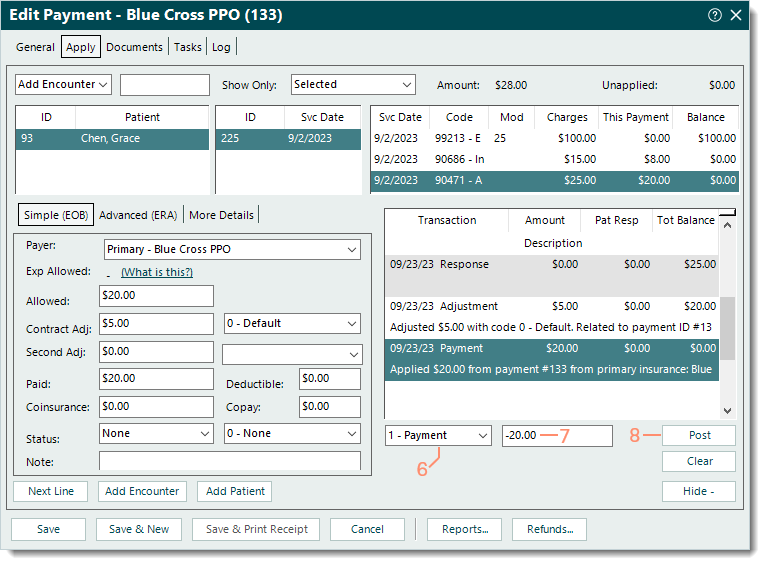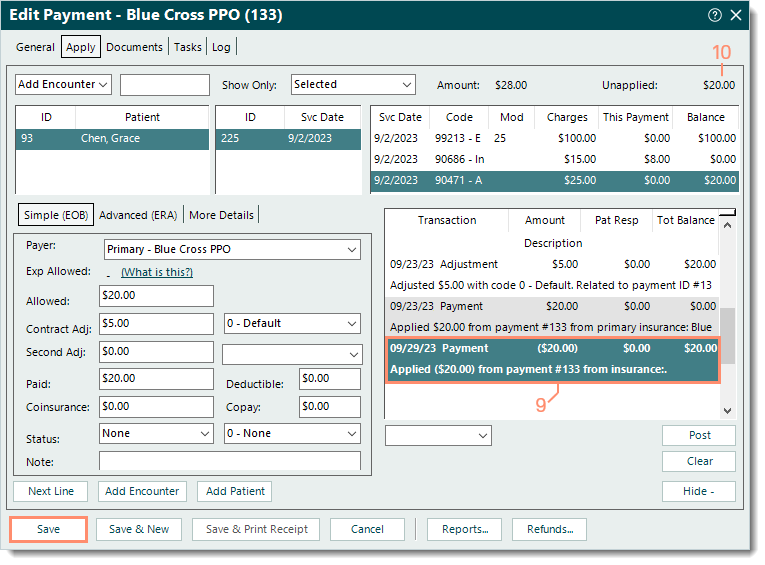Updated: 09/19/2023 | Views: 17866
Some situations require an insurance payment reversal (e.g., the insurance overpaid or paid in error). Once the applied payment amount is reversed, you can either refund the unapplied payment amount to the insurance or apply it later to another service line. Contact the insurance company directly for specific instructions.
Note: It is recommended to complete the Advanced Payment Posting training prior to posting insurance payment reversals. If you have not completed this training and would like more information or have completed this training but need further assistance with posting an insurance payment reversal, contact Customer Care.
Reverse Insurance Payment
Follow the steps below to locate the specific Payment record (related to the insurance payment that needs to be reversed) then post the reversal of the payment amount(s).
- Find the claim with the applied payment amount that requires the reversal and double click to open. The Edit Claim window opens.
- If the Payment record details (e.g., payment ID, check number, payer) are available, find the payment and double click to open it. The Edit Payment window opens then proceed to step 4.
 Tip: To return more accurate payment search results, select the All tab, use the Look For search bar to enter all or part of a keyword for the payment, and click to clear "Show unapplied only" as needed. Then, click Find Now. Tip: To return more accurate payment search results, select the All tab, use the Look For search bar to enter all or part of a keyword for the payment, and click to clear "Show unapplied only" as needed. Then, click Find Now.
- Under the Transactions section, double click the insurance Payment transaction line to open the Payment record. The Edit Payment window opens. Note: The insurance Payment transaction line description includes the applied payment amount, Payment ID number, and payer.
|
 |
- Select the Apply tab. The additional payment details display.
- Click to select the appropriate patient, encounter, and/or service line with the applied payment amount that requires the reversal as necessary.
- Click More + in the lower right of the window. Additional options display.
- If the service line was settled, click the drop-down arrow and select Reopen. Then, click Post.
|
 |
- Click the drop-down arrow and select 1 - Payment. Once selected, an additional field becomes available.
- Enter the minus (-) sign and the payment amount that needs to be reversed/unapplied (e.g., -12.34).
- Click Post. The Payment transaction line for the reversal is posted.
- If the adjustment associated with the payment also needs to be reversed, click the drop-down arrow and select 2 - Adjustment. Additional fields become available. Click the second drop-down arrow and select the adjustment code used previously to post the adjustment. Then, enter the minus (-) sign and the adjustment amount that needs to be reversed (e.g., -12.34) in the field. When finished, click Post. The Adjustment transaction line for the reversal is posted. For more information about reversing adjustments, review Reverse Adjustment.
|
 |
- Confirm the posted transaction line(s) is correct.
- If the posted transaction line needs to be removed, right click on the transaction line then select Remove.
- For additional actions (e.g., add note, settle service line, transfer balance), click the drop-down arrow to select the appropriate option and enter the information as necessary. Then, click Post.
Note: It is recommended to add a note indicating the reason for the payment reversal.
- Confirm the Unapplied amount reflects the payment amount(s) reversed.
- When finished, click Save. The payment amount is now reversed and remains unapplied until a refund is issued to the insurance or the amount is applied to another service line.
|
 |



